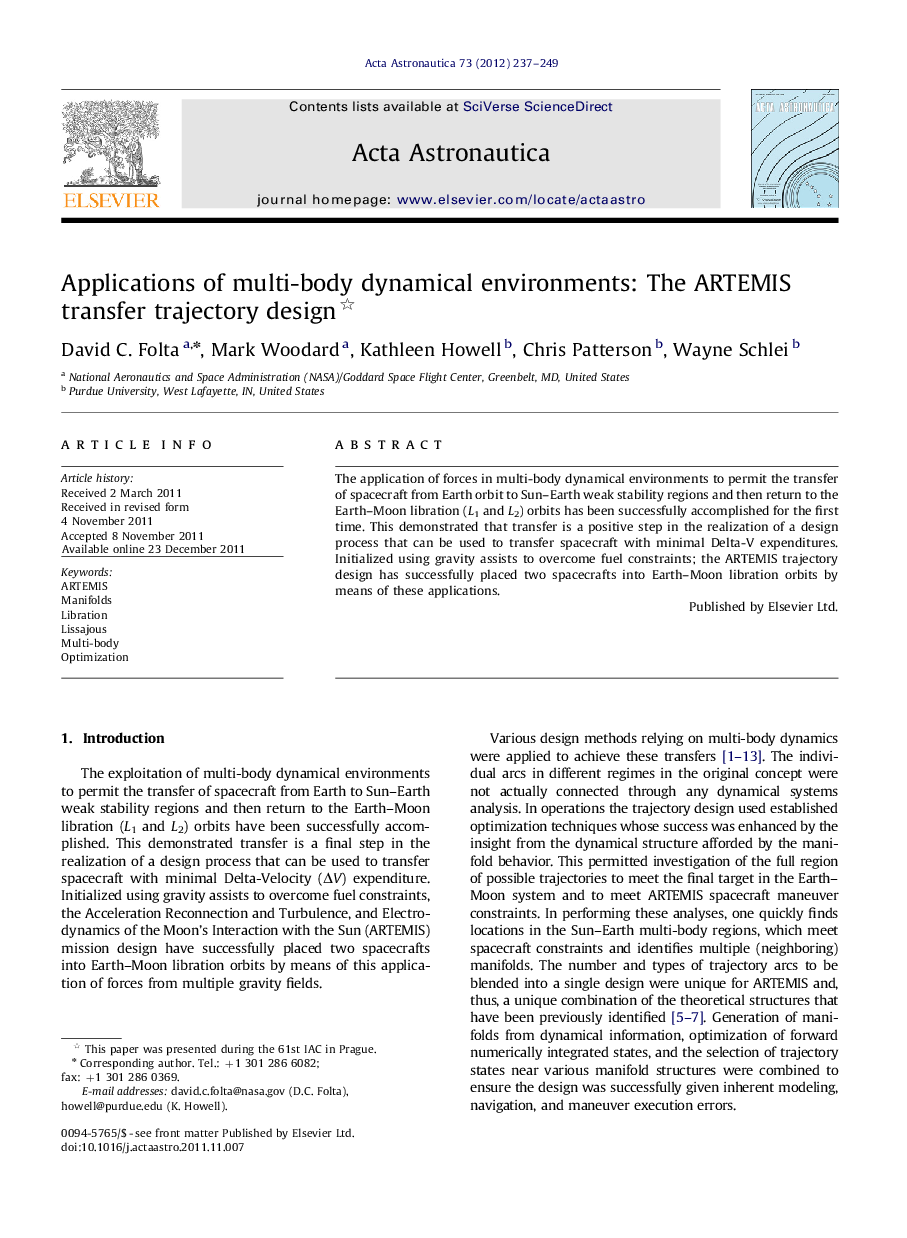| Article ID | Journal | Published Year | Pages | File Type |
|---|---|---|---|---|
| 1715365 | Acta Astronautica | 2012 | 13 Pages |
The application of forces in multi-body dynamical environments to permit the transfer of spacecraft from Earth orbit to Sun–Earth weak stability regions and then return to the Earth–Moon libration (L1 and L2) orbits has been successfully accomplished for the first time. This demonstrated that transfer is a positive step in the realization of a design process that can be used to transfer spacecraft with minimal Delta-V expenditures. Initialized using gravity assists to overcome fuel constraints; the ARTEMIS trajectory design has successfully placed two spacecrafts into Earth–Moon libration orbits by means of these applications.
► Operational demonstration of a multi-body dynamical environment transfer. ► Design process includes traditional optimization used to compute minimal Delta-Velocity. ► Reduction of Delta-V budget is substantially enhanced by exploiting the dynamical structure. ► Use of dynamical manifold verification is a substantial leap in the operational design.
